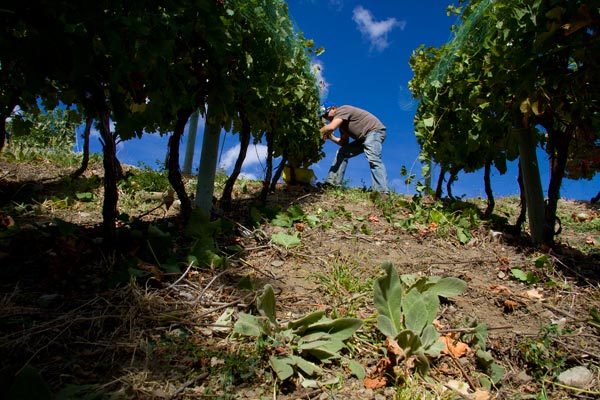Stewardship
 We live and work in a delicate ecosystem. The South Okanagan is a desert-like climate, home to a variety of indigenous plants, animals, birds, and reptiles – some of which can be challenging to be around but must be respected.
We live and work in a delicate ecosystem. The South Okanagan is a desert-like climate, home to a variety of indigenous plants, animals, birds, and reptiles – some of which can be challenging to be around but must be respected.
Over the years, we’ve worked closely with The Land Conservancy to help us protect sensitive areas and reintroduce natural species where they may have been depleted. We have seen good progress in a number of initiatives – often we’re the first people The Land Conservancy contacts to try new ideas.
First, we installed a snake fence to help deter the little fellows from surprising vineyard workers and visitors. Then we built the amphitheater, and agreed to not develop the hillside below. Recently we added bluebird boxes to our vineyards. Each of these individual acts combines to create a larger movement in the right direction.
in the vineyard
We don’t use toxic baits or sprays to control pests. Instead, we change the habitat to discourage them – like removing big rocks and other hiding spots. Fencing, netting, and the strategic use of sound help keep snakes, deer, and birds at bay – naturally.
Our vineyard manager Andrew managed a 100+ acre irrigation project, swapping overhead watering for “drip” irrigation. At a cost of around $1M, the benefit in vine growth, grape quality, and water savings are profound. (for more information about our drip irrigation project in the water section)
waste not, want not
Let’s talk about compost. It’s not sexy and it’s not all that photogenic – but it’s a necessity when it comes to farming. And that’s what we do: farm.
There are a surprising amount of leftovers in winemaking. The fancy word is “pomace” – the organic matter left behind after liquid is squeezed out of the grapes. We compost this waste and use it to feed the vines nutrients. It’s the ultimate vineyard smoothie.
pack up, ship out
Moving wine from our cellar to a store shelf or restaurant wine list takes tonnes of glass and a good deal of cardboard. Until we’re allowed to offer fill-a-jug at the winery, we rely on bottles and boxes by the truckload.
So, we choose wisely, where possible our glass is recycled glass. We also only place orders when we can get a full truck; that might seem like a small thing, but it saves duplicate trips and wasted fuel. (there’s more to this story in our carbon section)

